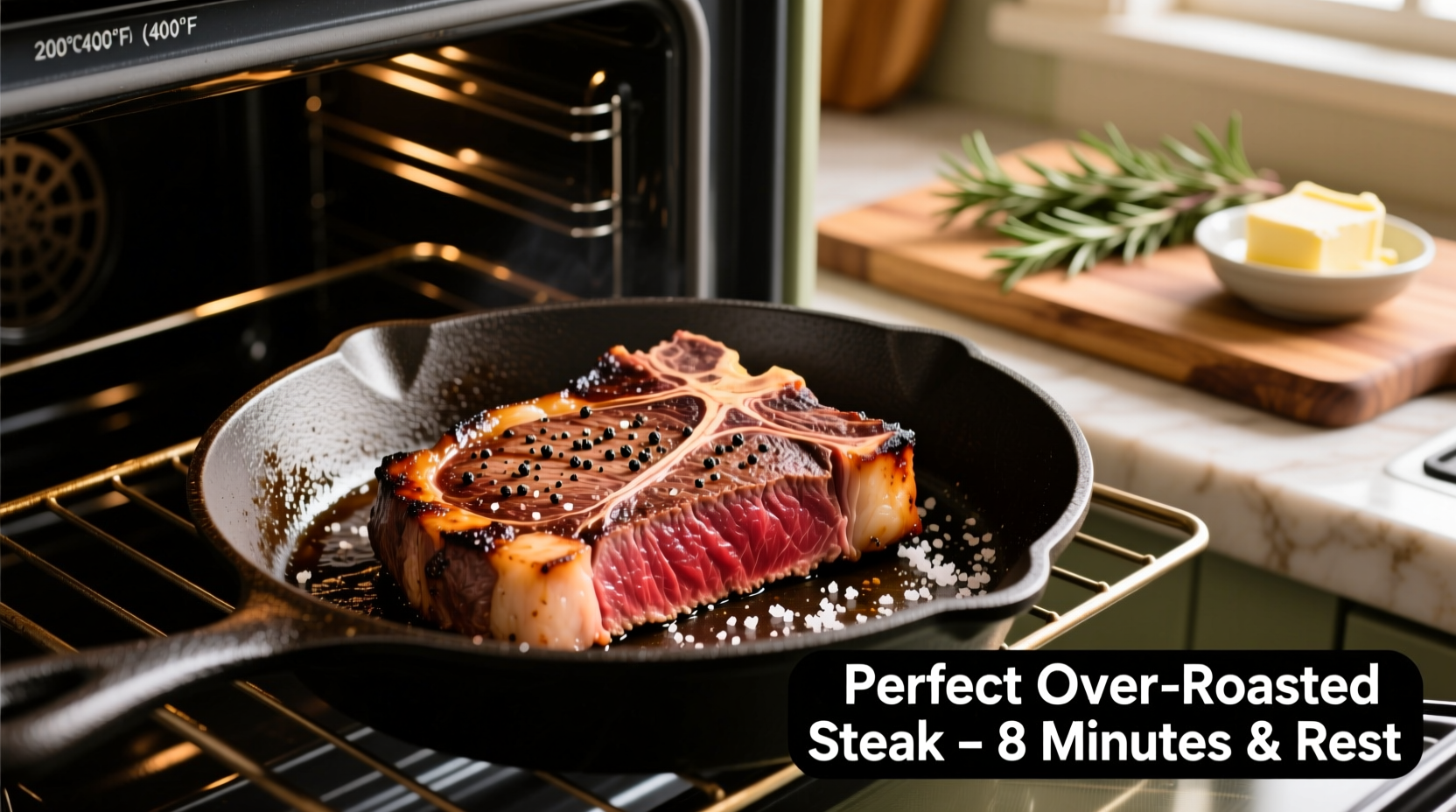Why the Oven Method Beats Grill-Only Cooking
While grilling remains popular, oven-finishing provides consistent results regardless of weather conditions. The controlled environment prevents uneven cooking that often happens with outdoor grilling, especially with thicker cuts. According to USDA food safety guidelines, achieving precise internal temperatures is critical for both safety and quality. The oven method allows you to monitor temperature accurately without flare-ups that char the exterior before the interior reaches proper doneness.
Step 1: Selecting and Preparing Your Steak
Choose a well-marbled cut like ribeye, New York strip, or filet mignon with at least 1 inch thickness. Thinner cuts risk overcooking during the sear phase. Remove steak from refrigerator 45-60 minutes before cooking—this critical step ensures even cooking. Cold meat straight from the refrigerator creates temperature gradients that lead to gray bands inside your steak.
| Steak Thickness | Room Temperature Time | Recommended Cut |
|---|---|---|
| 1 inch | 45 minutes | New York strip |
| 1.5 inches | 60 minutes | Ribeye |
| 2 inches | 75 minutes | Filet mignon |
Dry the surface thoroughly with paper towels—moisture is the enemy of proper searing. Season generously with coarse salt and freshly ground black pepper on all sides. For enhanced flavor development, add a light coating of high-smoke point oil like avocado oil.
Step 2: The Perfect Sear and Oven Finish
Preheat your oven to 400°F (204°C) with rack positioned in the center. Heat a cast-iron skillet over medium-high heat until smoking hot (about 5 minutes). Place steak in skillet and resist moving it for 2-3 minutes to develop a proper crust. Flip and sear the other side for another 2-3 minutes.
Transfer the entire skillet to the preheated oven. This seamless transition from stovetop to oven is why cast iron works best—it's oven-safe and maintains consistent heat. Cook according to thickness and desired doneness:
- Rare (125°F): 4-6 minutes
- Medium-rare (135°F): 6-8 minutes
- Medium (145°F): 8-10 minutes
- Medium-well (150°F): 10-12 minutes
Insert an instant-read thermometer horizontally from the side for the most accurate reading. Remember that carryover cooking will raise the temperature 5-10°F during resting—this crucial food science principle means you should remove steak 5°F below your target temperature.

Step 3: The Critical Resting Period
Transfer steak to a cutting board or warm plate and tent loosely with foil. Resting for 5-10 minutes (depending on thickness) allows juices to redistribute. Cutting too soon releases those precious juices onto your plate instead of staying in the meat. During this time, the internal temperature continues rising slightly while muscle fibers relax.
Troubleshooting Common Oven Steak Problems
Burning exterior before interior cooks: Oven temperature too high or steak too cold when starting. Always bring steak to room temperature first and maintain 400°F oven.
Gray band inside steak: Insufficient sear or uneven oven temperature. Ensure your skillet is properly preheated and oven temperature is accurate—use an oven thermometer for verification.
Dry, tough texture: Overcooking or skipping the resting period. Invest in a reliable instant-read thermometer and always allow proper resting time.
Pro Chef Techniques for Elevated Results
For restaurant-quality results, try these professional methods:
- Reverse sear method: For steaks thicker than 1.5 inches, start in a low oven (275°F) until internal temperature reaches 115°F, then sear at extremely high heat for 60-90 seconds per side
- Butter basting: During the final 2 minutes of oven time, add 2 tablespoons butter, crushed garlic, and fresh herbs to the skillet and spoon over the steak continuously
- Dry brine: Salt steak 24-48 hours in advance and refrigerate uncovered—this enhances both flavor and texture through enzymatic breakdown
Temperature Guide for Perfect Doneness
According to the American Meat Science Association, these are the scientifically determined temperature ranges for optimal texture and safety:
| Doneness | Internal Temperature | Visual/Tactile Cues |
|---|---|---|
| Rare | 120-125°F (49-52°C) | Cool red center, soft like cheek |
| Medium-rare | 130-135°F (54-57°C) | Warm red center, soft like chin |
| Medium | 140-145°F (60-63°C) | Warm pink center, springy like forehead |
| Medium-well | 150-155°F (66-68°C) | Small amount of pink, firm |
| Well-done | 160°F+ (71°C+) | No pink, very firm |
Remember that carryover cooking continues after removal from heat, so pull your steak 5°F below your target temperature. The USDA recommends a minimum internal temperature of 145°F for beef steaks with a 3-minute rest period for food safety, though many culinary professionals prefer medium-rare (135°F) for optimal texture and flavor.
Serving Suggestions for Complete Dinner Experience
Slice against the grain at a 45-degree angle for maximum tenderness. Pair with simple sides that complement without overwhelming: roasted garlic mashed potatoes, sautéed mushrooms, or a crisp arugula salad. For sauce, try a quick pan reduction with the steak drippings, beef broth, and a splash of red wine.











 浙公网安备
33010002000092号
浙公网安备
33010002000092号 浙B2-20120091-4
浙B2-20120091-4